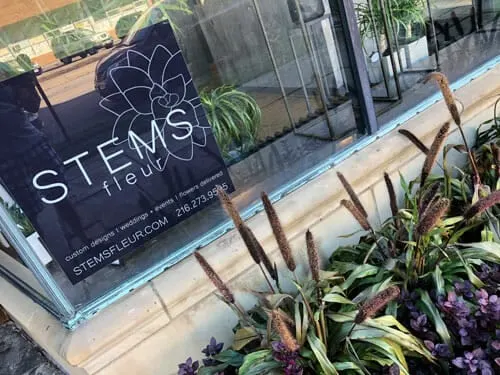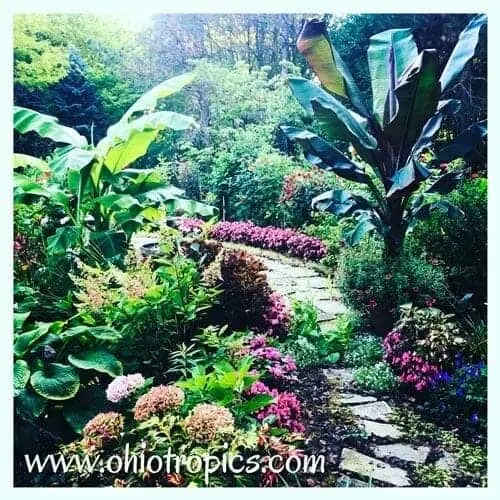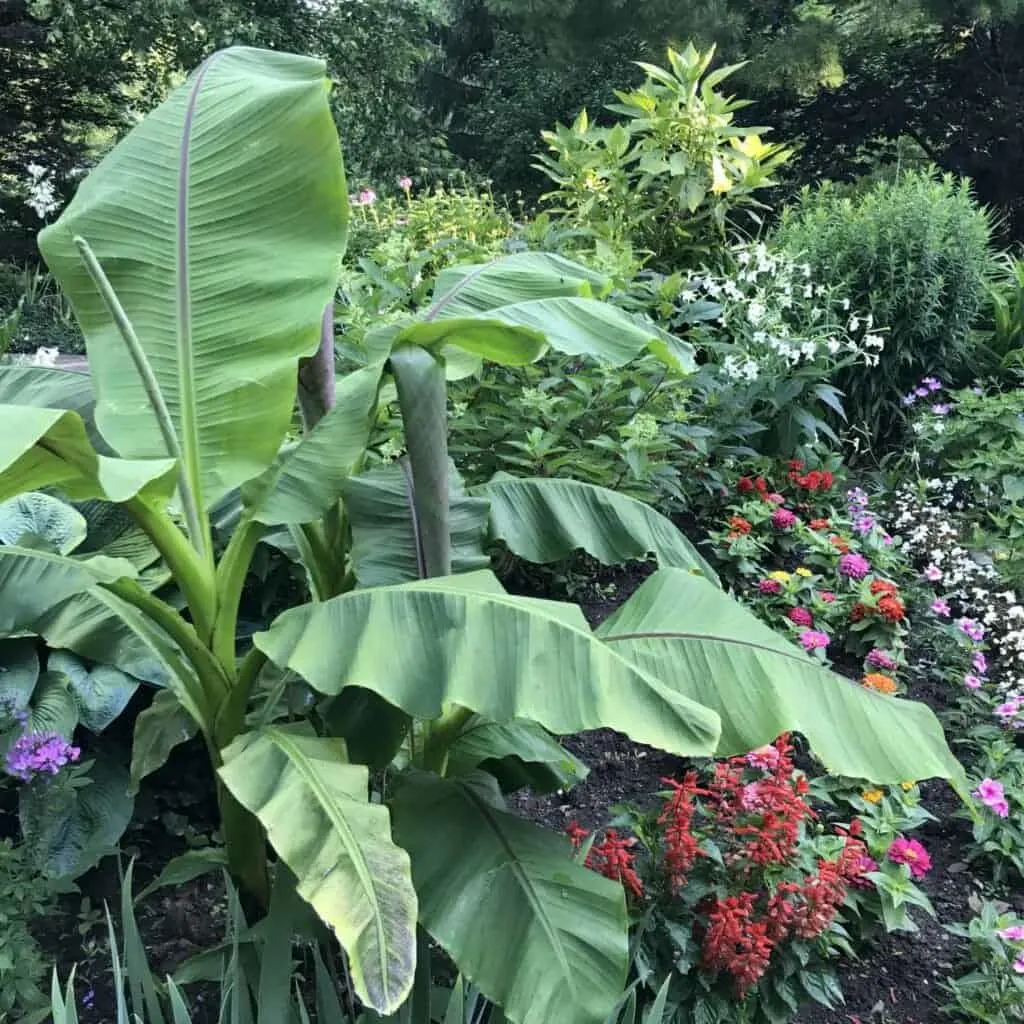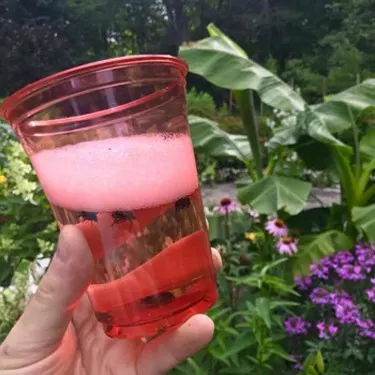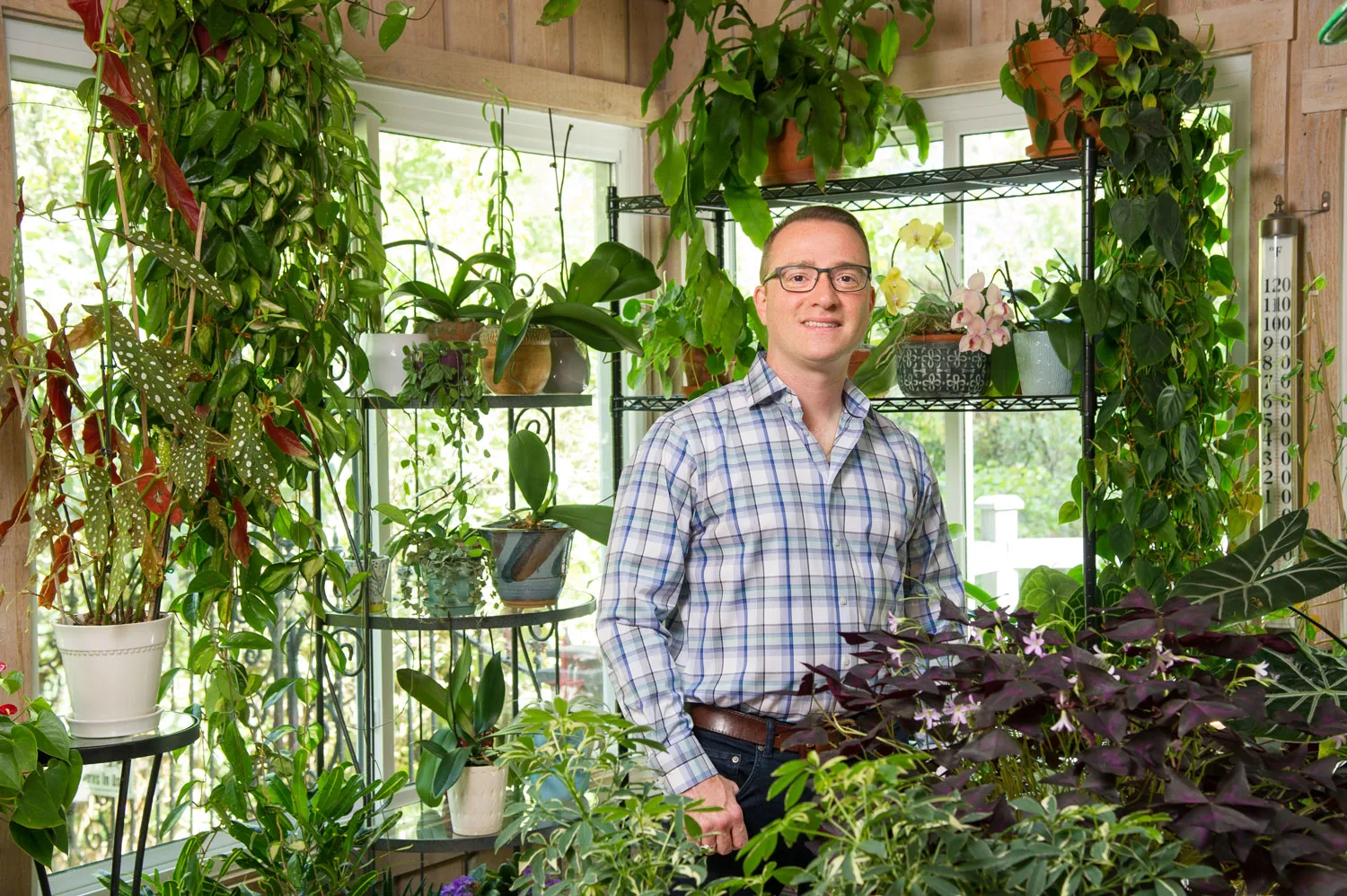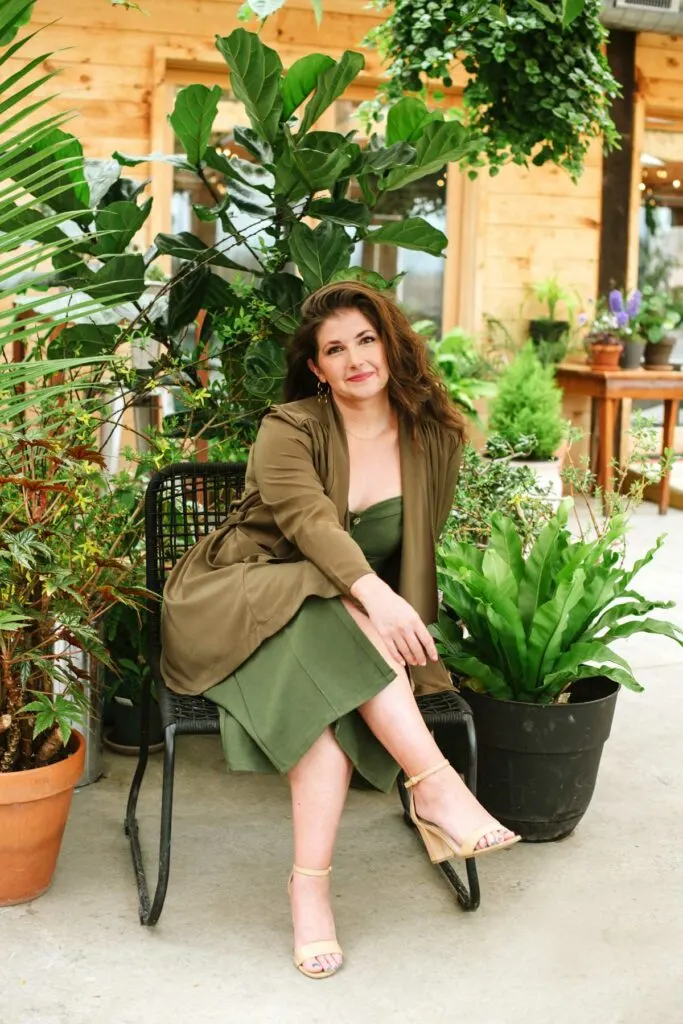Some of the links in this post may be affiliate links.
What makes a garden fabulous? When you see a garden that strikes you immediately as beautiful, what exactly makes it so pleasing? Flower garden design plans are so critical to having an interesting garden!
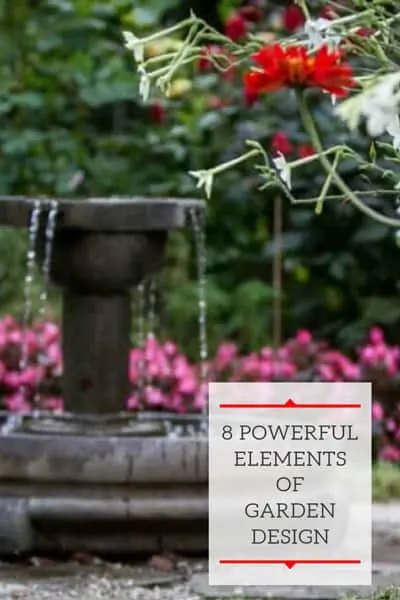
I wanted to share my thoughts on what I believe are very important elements in flower garden design. I use these elements in my own gardening every year to create a mesmerizing garden!
These are not rules, but rather suggestions. There is no formula for a beautiful garden. Gardening is both science and art. The only necessity though is a passion for what you do, and everything else will follow.
So many people have asked me to go visit their home because they too want to know how to create a beautiful garden.
A beautiful garden should engage ALL the senses, so let’s get into some elements to consider when creating a garden, in no particular order.
Table of Contents
Movement in Garden Design
Many people don’t think of movement as an element in garden design, but it adds a lovely touch! Take a look at the picture below from my own garden.
The purple fountain grass not only looks beautiful, but it also adds an element of motion in the garden. The strappy leaves and plumes move gracefully in the wind and offer a nice contrast to the stiffer form of the surrounding plants.
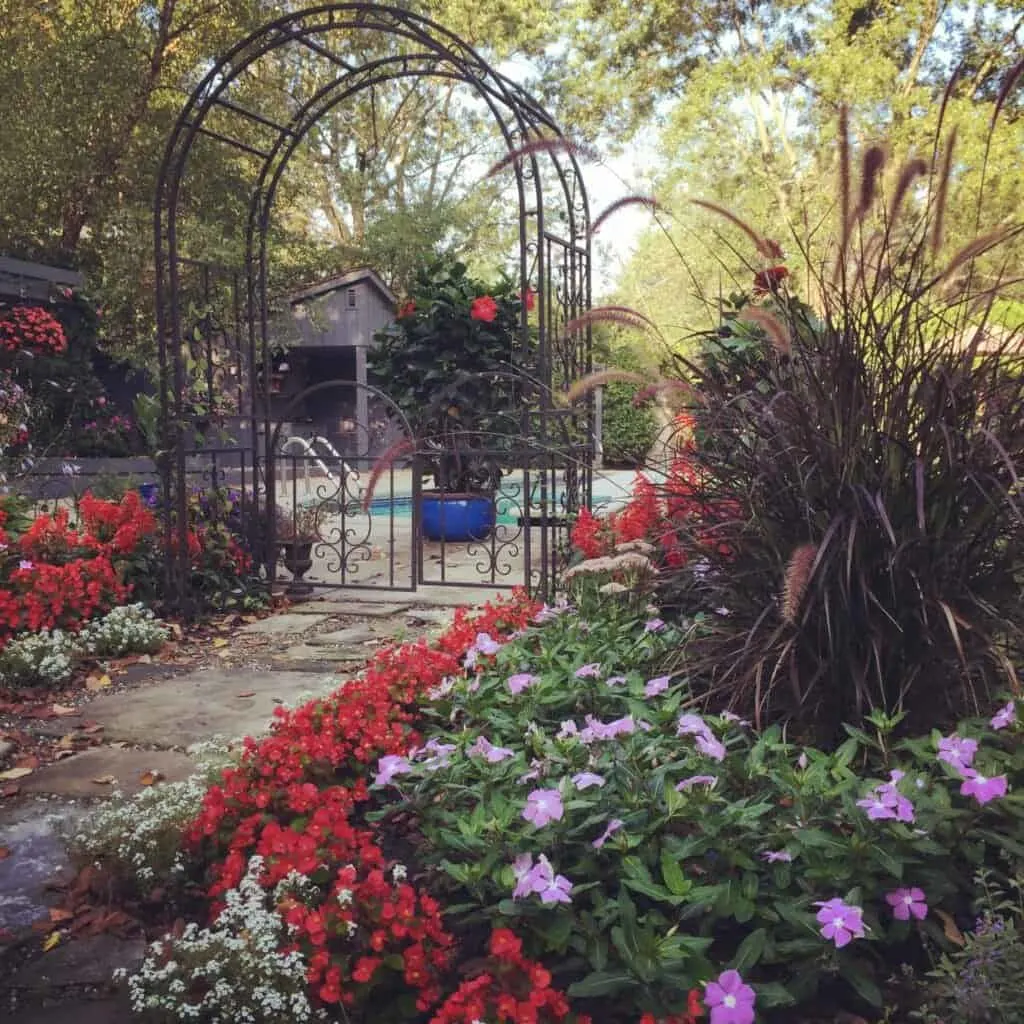
Varied Height in Garden Design
I always strive for varied heights in the garden. How boring would a garden be if everything was only one height???
Take a look at the picture below. I have 4 different levels of height in this portion of my garden. The shortest plants consist of the white sweet alyssum which went all the way around the perimeter of the garden.
Then came the pink wax begonias. Behind the begonias are a mixture of Cosmos ‘Sonata’ (left) and red 4 O’Clocks (right).
In the back, various tall dahlias served as the back wall of the garden. Having a variety of heights immediately makes your garden feel more intimate. More like an outdoor room, which was my goal in this particular garden!
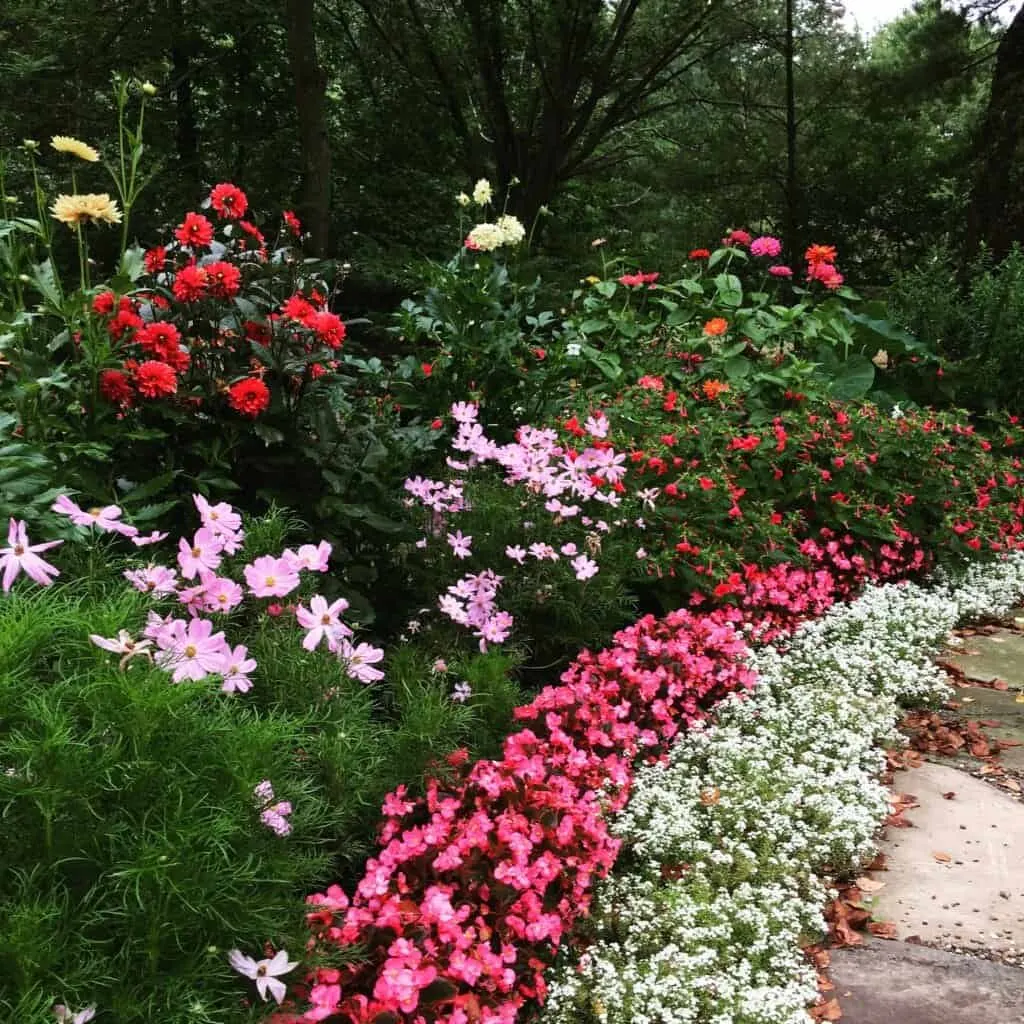
Water Features in Garden Design
A great way to introduce an element of sound into the garden is by using a water feature! It doesn’t have to be anything fancy. I purchased the fountain below at 50% off during a yearly sale at a local garden center.
It’s made out of cast concrete but made to look like stone. Once I was walking through the garden and the power tripped so the fountain was not running.
I quickly realized just how much interest and serenity the sound of trickling water adds to any space. I will venture to say that I will never again have a garden without a water feature!
Even if you don’t have a large space or the budget for a large fountain, there are many smaller water features out there and you should be able to find one for any space. There are even table-top water features that you can set out onto your patio.
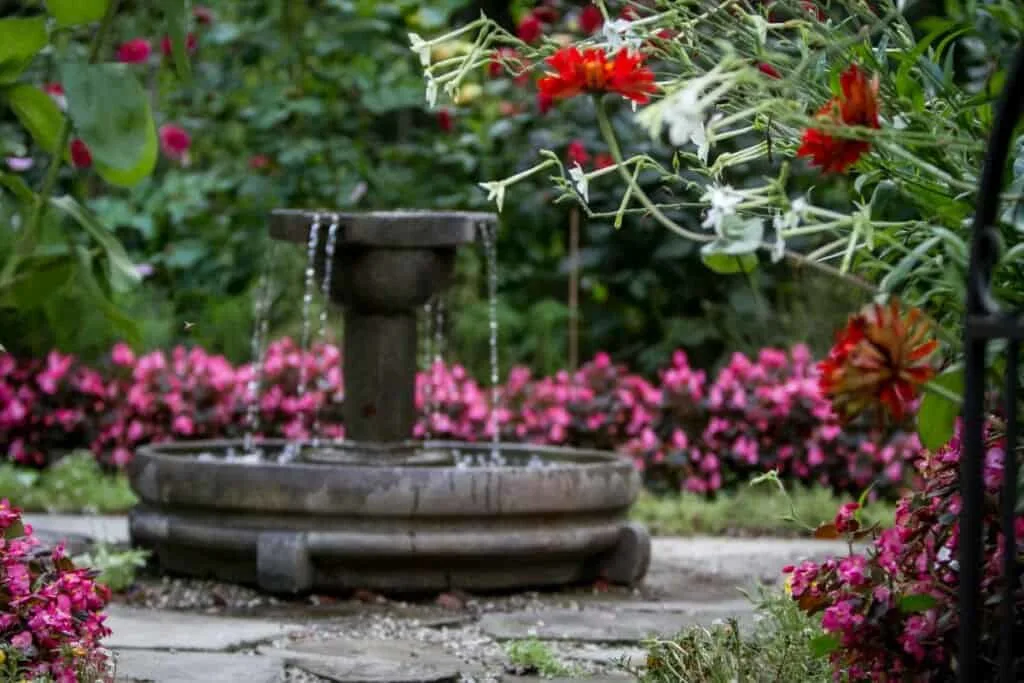
Plant the Unexpected
Are you sick of planting the same old plants every single year? Tired of the same old begonias, marigolds and petunias? Step outside your comfort zone and try something different! Be bold and experiment.
I wanted to turn our garden into one with tropical flair. When I show people the picture below, they can’t believe that it’s our garden in Cleveland, Ohio.
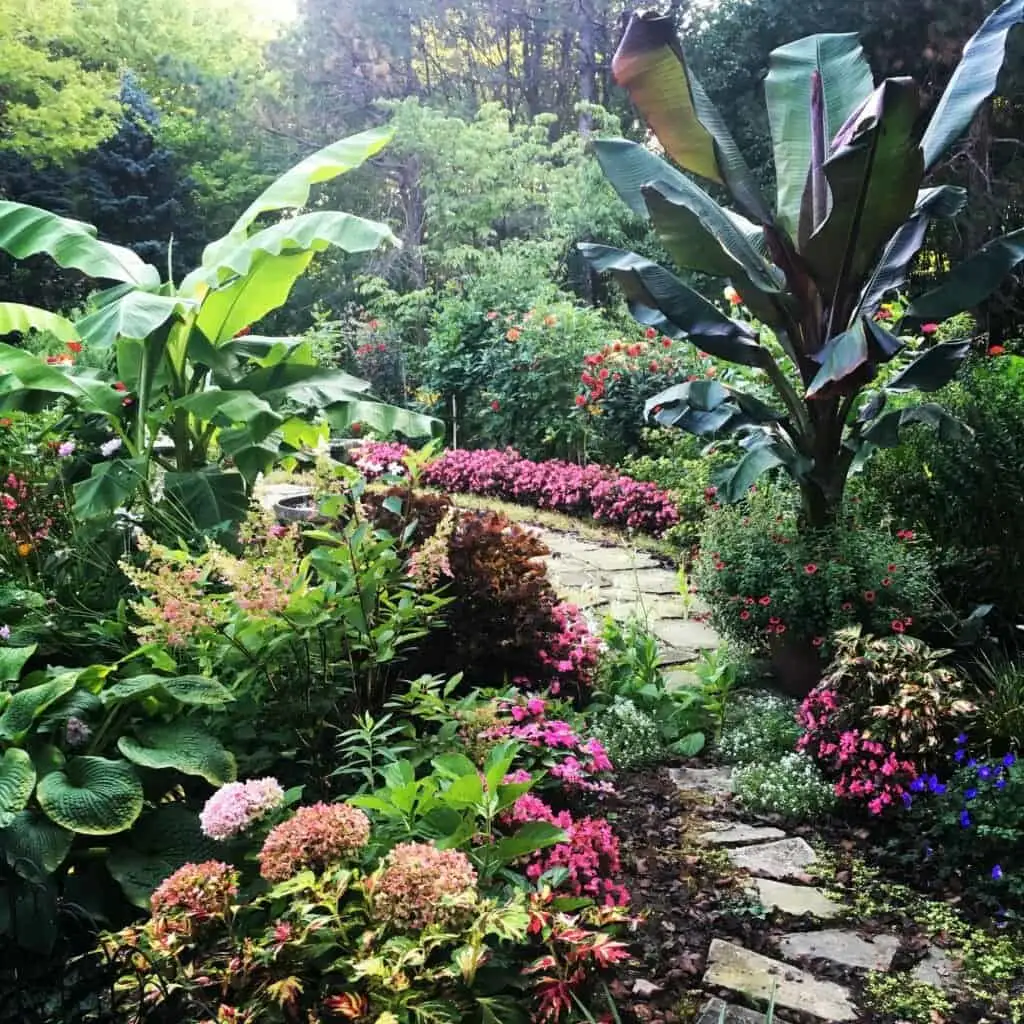
The main accent plants in this scene below from my garden are the two banana plants.
Not only do they add a wonderful height element to the garden, but they also provide contrast with their large leaves, as well as add an unexpected element to a garden in Midwestern United States.
The banana with light green leaves on the left is Musa basjoo, which is a hardy banana. In fact, it is hardy in all 50 states in the U.S.A.! I would recommend mulching in the colder regions however.
The other banana featured (on the right) is Musa ensete maurelii, or the red Abyssinian banana. I had this plant growing in a pot and this particular variety adds a nice touch because of the beautiful multi-colored leaves.
Don’t be afraid to incorporate pots right in the heart of your garden! Sometimes it provides a perfect solution, and I will also go into this topic a little bit more in the next section below.
Be sure to check out my banana care blog post where I describe exactly how I care for these two bananas in my garden!
Night-blooming Flowers
There is nothing like walking through a garden in the evening and having a gentle breeze waft the intoxicating fragrance of nocturnal flowers straight to your nose.
I love walking through the garden on a full moon and just observing. Because of certain varieties of plants I use in my garden, it is a feast for the senses after dark.
In the photo below, I planted a triple-threat of evening fragrance: red 4 O’Clocks, white flowering tobacco (Nicotiana alata), and a yellow flowered Brugmansia (that smells like lemon Pledge!).
All 3 of these plants have their flowers open in the evening, and then close the next morning around mid-day or so, depending on if it is cloudy or not. I save these plants year over year.
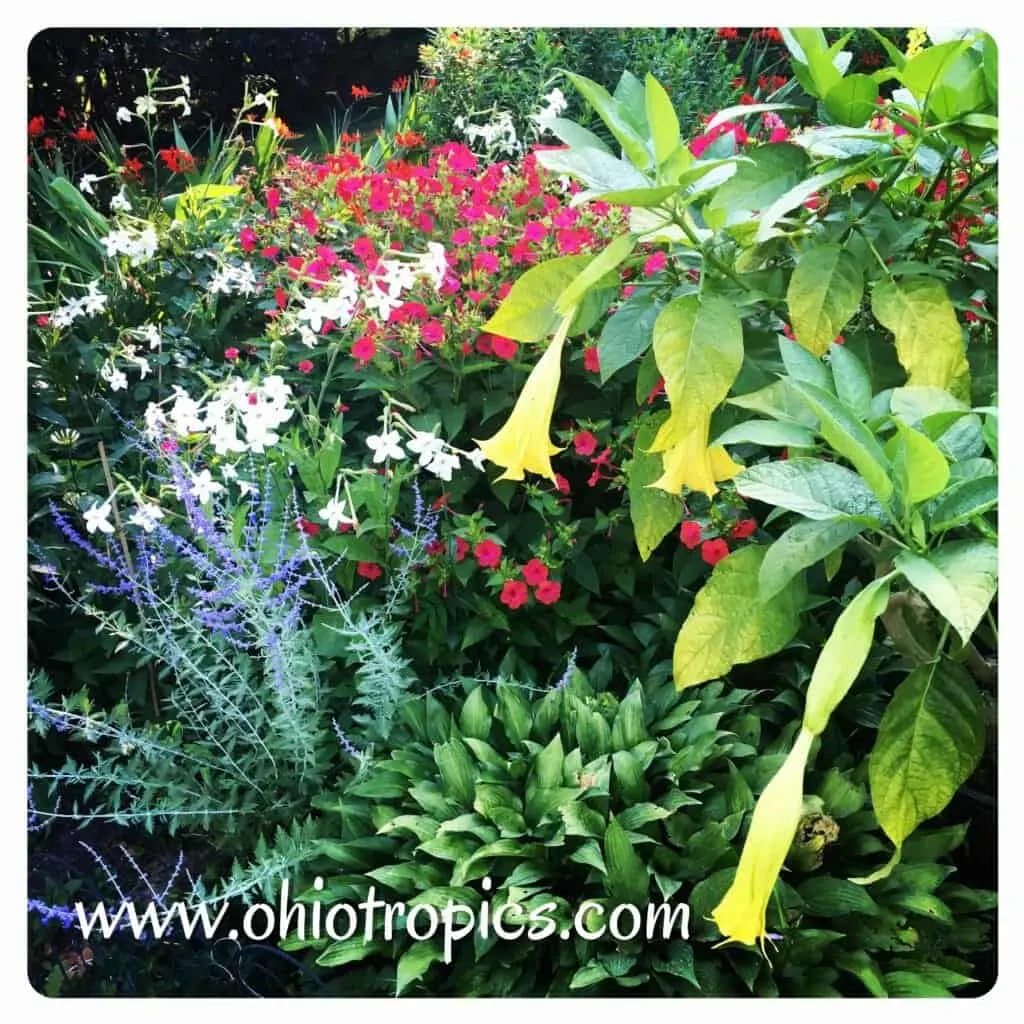
The flowering tobacco will reseed, but the roots of my plants actually come back every year even though they are not “supposed to” in my gardening zone.
This is why you shouldn’t believe everything that you read. Try it out for yourself!
Nicotiana alata has an amazing, very sweet fragrance that carries pretty far in the night air. I grew these initially from seed, and they’ve acted as perennials in my garden ever since.
The red 4 O’Clocks were also grown from seed. These form tubers and I dig them up every fall and replant in the spring. They are named 4 O’Clocks because their flowers open in the late afternoon.
They come in a variety of colors and have a very delicate sweet fragrance. Much less powerful than the flowering tobacco, but fragrant nonetheless.
Finally, the Brugmansia, with the large yellow flowers that were not yet fully opened for the evening in this picture, has a delicious fragrance. This particular plant has a strong lemon-y fragrance. It’s quite hard to describe, but it does smell amazing!
I overwintered this plant in our heated garage. They are very fast growing, vigorous plants but they are toxic so be careful where you grow them if you have any small children or pets.
This is another example of incorporating pots within the garden. In the spot where the yellow Brugmansia is in the photo above, I wanted some height and additional contrast in that area, so I moved this pot right in that spot! It worked out perfectly.
Continual Blooming
One of the criteria that I use for any garden is that I want continual blooming. This is just my preference. There are many gardens that are equally beautiful and only consist of mostly foliage.
I prefer gardens with a lot of blooms, and there are a different ways to achieve this:
When selecting perennials for your garden, choose ones that have staggered blooming times so that everything is not all blooming at the same time.
Normally perennials have one big bloom for the year, and then they are done. Some will rebloom with some coaxing, however. A garden with only perennials can indeed be beautiful.
But if your goal is to always have something in bloom with only perennials, you would need to plan this very well!
In designing my own gardens, I carefully select various perennials with staggered blooming times, and then I intermix large amounts of annuals or tropicals. These are the workhorses in your garden.
Although they are a lot more work to have to plant every year, they are well worth it. My gardens are never without something blooming.
In fact, when everyone else’s gardens look tired and worn out by the heat of the summer, mine is just getting started and will continue to evolve beautifully throughout the summer and fall seasons.
Contrast in Garden Design
This is one element that I find is so important in making a garden interesting. If everything is all the same, it is boring! Diversity is key. There are many ways to add contrast to your garden:
- We talked about the element of Height already
- Varying leaf and flower shape, color, and size
- Introducing stone, fountains or statuary into your garden to contrast against plants
Take a look at the contrast in the following photo which was taken in my garden:

Creating a Garden Entrance
When we moved to our new house, I finally was able to create the “garden room” that I’ve always wanted. I wanted an actual entrance or door to be opened so you can enter the garden.
I took this picture in late May and the rest of the garden looks nothing close to what it will be by mid to late summer. I assembled the arbor in the picture below, and planted four tiny clematis (all different kinds).
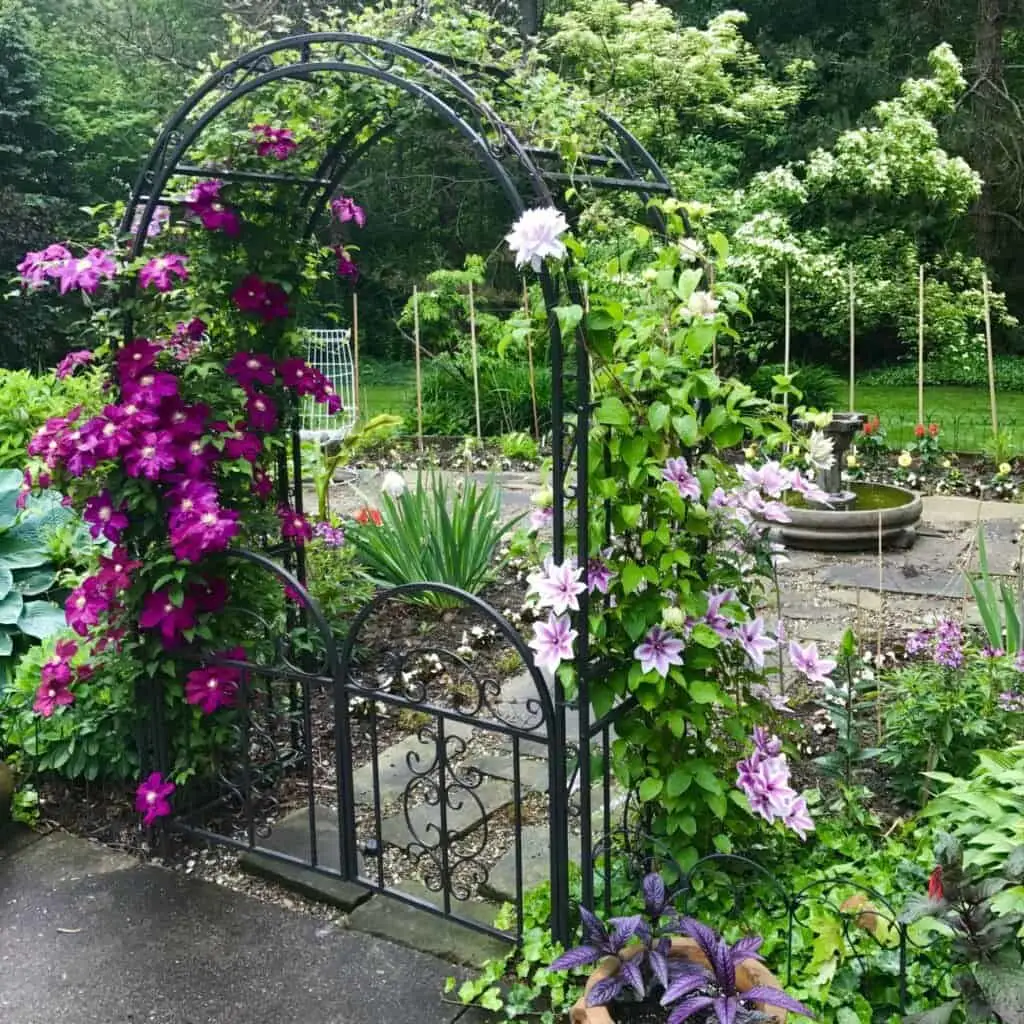
At that time the clematis were barely visible, and this year they finally are starting to take off. I also staggered the blooming periods.
There is one variety (the one rambling on the very top) that will start blooming when the rest are just about done.
It is a variety called Purpurea Plena Elegans and has smaller, double purple flowers. Adding an entrance to your garden will make it a more intimate experience.
I always feel like I am getting away from the rest of the world when I open that little gate to enter my garden.
I’ve touched on quite a few topics here on how to create a beautiful garden. Go out and experiment, do some research, and grab a shovel!
If you follow these tips for flower garden design, you will be sure to have a stunning garden! So go ahead and create that botanical retreat that you’ve always dreamed of.
Please do me a favor and share this post to social media because it will help me spread the Ohio Tropics plant care tips to the masses! Also, check out my shop on Amazon for all your plant care needs:
OHIO TROPICS PLANT CARE STOREFRONT

